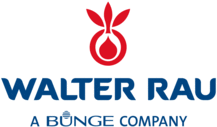Contact
Walter Rau
Neusser Öl und Fett AG
Industriestraße 36–40
41460 Neuss
41460 Neuss
Palm Oil

Learn more about Bunge’s commitment to sourcing and processing traceable and certified sustainable palm oil here.
